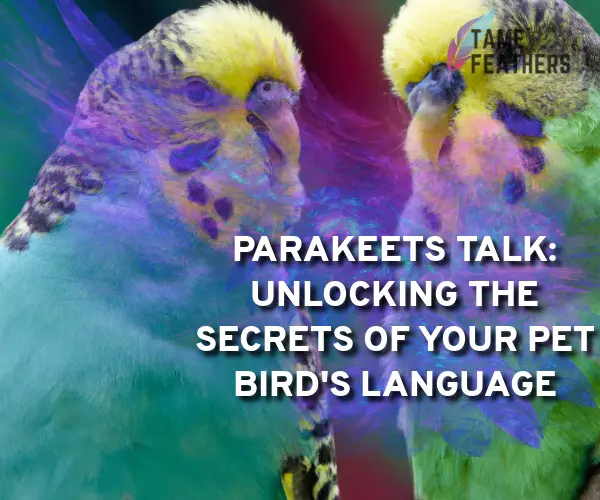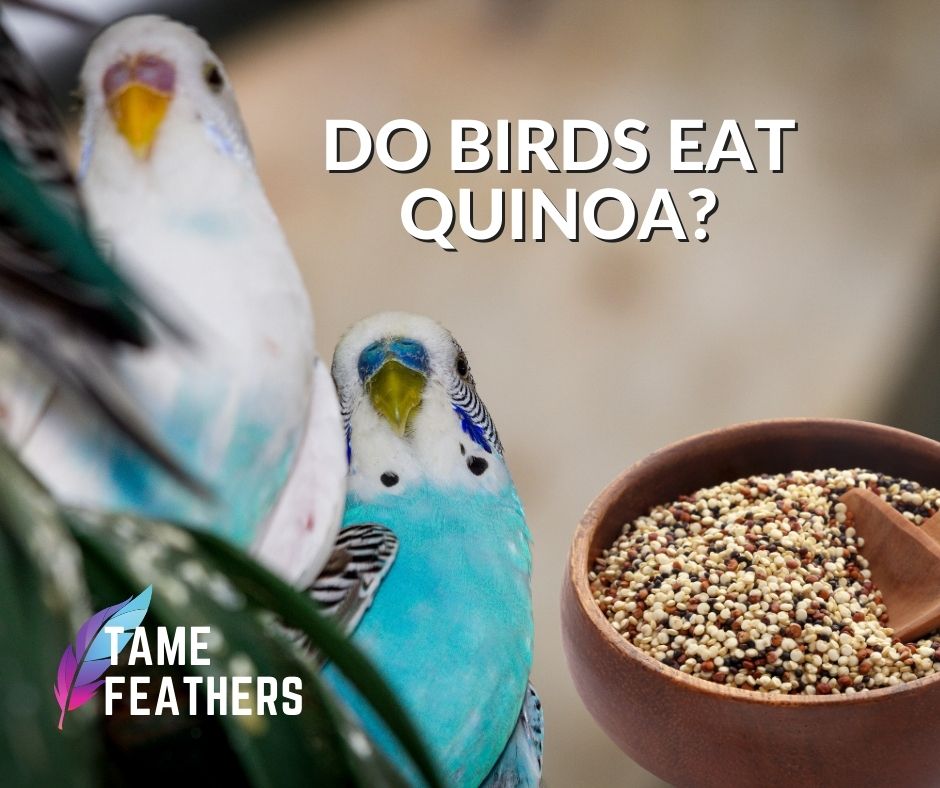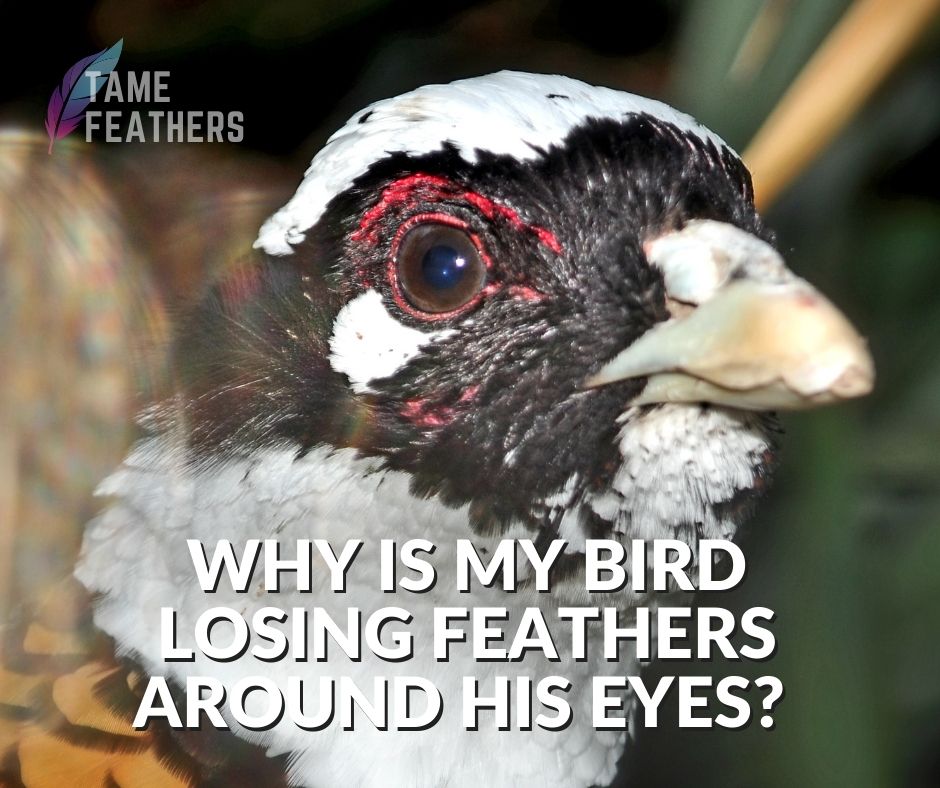Ever pondered the language of your pet parakeet? If so, you are not by yourself. Smart parakeets enjoy using a range of noises to interact with their owners. But until today, it has been challenging to grasp the mysteries of their language. In order to better understand your pet bird, we’ll explore the interesting world of parakeet vocalizations in this post. So let’s begin our exploration of the enigmatic world of parakeet chatter!
Understanding Parakeet Speech
Parakeets are able to develop deep emotional bonds with their keepers due to their high level of intelligence and their outgoing nature. Communication is a significant component of this link; by gaining an understanding of the vocalizations of your pet parakeet, you may better comprehend its requirements and inclinations. In spite of the fact that certain noises may appear to be meaningless chirps or squawks, there is in fact significance behind them.
Parakeets are able to discriminate between calls for attention, warnings of danger, and expressions of contentment or discontent by varying the tones, intensity levels, and pitch variations that they utilize in their speech. Due to the fact that every bird has its own unique language, it takes some time to learn how these vocalizations translate into communications.
Recognising The Different Types Of Vocalisations
Your parakeet will make songs, contact calls, alarm calls, and flight calls, which are the four primary sorts of sounds it will produce. When a bird desires the attention of another species, like a human or another parrot, it will make a contact call. These calls can range from a quiet chirp to a booming “hello!” Flight calls show joy for anything like food or playing, but alarm sounds warn about perceived hazards such as predators.
The majority of a bird’s song is made up of whistles, and these whistles frequently have meanings associated to them. Some birds learn songs from other species, while others develop their own melodies throughout the course of their lives. Whistles may also be used in conjunction with mating rituals, but in most cases, they are used to signal general delight.
Interpreting Body Language
Your winged companion won’t rely solely on vocalizations to communicate with you; it will also use its body to convey meaning. If he is flapping his wings excitedly or doing an exuberant dance, it is likely that whatever is happening greatly pleases him. For example, if he is looking around nervously with his wings slightly extended, he may be trying to alert you that something is wrong in the environment. On the other hand, if he is looking around nervously with his wings slightly extended, he may be trying to alert you that something is wrong in the environment. Other signs include the bird preening its feathers, which is a sign of happiness; the bird pushing out its chest, which is a show of dominance; the bird stooping down towards you, which symbolizes welcome and friendship; and the bird tilting back, which symbolizes hostility and disapproval.
Responding Appropriately
After becoming accustomed to the many cues that your pet parrot uses, your reactions should become second nature. If he is making noises that indicate he is uncomfortable, find out what is making him uncomfortable; in a similar vein, respond quickly to any requests made so that trust can be created between both parties. When someone is singing, showing appreciation by nodding along with them and gently clapping will encourage them to sing even more! And as a last note, make sure you always reinforce desired behaviors with treats, whether they are verbal (such as “Good boy”) or edible – the chances are high that your companion will soon learn which acts bring the best rewards!
Recognising Unhealthy Signs
It is essential to not only comprehend constructive behavior, but also destructive behavior. Warning indications include plucking feathers, loss of appetite, lethargy, and other symptoms that indicate underlying health issues that require prompt medical intervention. Additionally, eyes that lack luster and colors that are less vibrant than usual are signs of stress. You should try to identify the source of the stress, such as an overcrowded cage or an unfamiliar noise, and then respond appropriately by addressing concerns as soon as possible. If you don’t, mental anguish can manifest, which can lead to additional complications in the future…
Keeping Your Pet Stimulated
To prevent your child from becoming bored, make sure there are plenty of activities available throughout the day, especially when they are left alone. Some examples of these activities include playing games that require interaction, such as hide and seek; providing toys designed specifically for curious minds; and regularly introducing novel items that stimulate the senses, such as new scents or textures. All of these things help enrich the environment overall, which fosters better overall health.
FAQs About Parakeets
Can a parakeets talk?
Yes, parakeets can learn to mimic human speech.
How do I get my parakeet to talk?
Parakeets can be taught to talk with patience and consistency. Start by talking to your parakeet in a calm, soothing voice every day for at least 10 minutes. Repeat the same words or phrases over and over again until your parakeet begins to mimic them. You can also try playing audio recordings of other birds speaking so that your parakeet will learn from them as well.
Do parakeets understand what you say?
Parakeets can learn to recognize certain words and phrases, but they do not understand the meaning of what is being said.
Are parakeets talking when they chirp?
Parakeets can learn to mimic human speech, but they are not actually talking when they chirp.
We Thought You Might Want To Know This About Parakeets… 😊
If you’re interested in getting a parakeet as a pet, there are a few things you should know. First, you’ll want to learn about different types of parakeets, such as the popular
parakeet lovebird.
You can also search for
parakeets for sale near me to find a pet that is nearby. Additionally, you may want to look into where you can find
parakeets in London or learn
what fruits a parakeet can eat.
If you’re interested in getting a parakeet as a pet, you may also want to consider
if parakeets can talk, finding
baby parakeets for sale, or researching the
best food for parakeets.
You may also want to consider the sounds that parakeets make, such as
parakeets singing or
parakeets talking. Also, you can find
pet parakeets for sale as well as learn
the meaning of parakeet.
Lastly, you may also want to know
if parakeets can eat grapes, if you are a grape-fan and plan on dining with your feathered friend!





